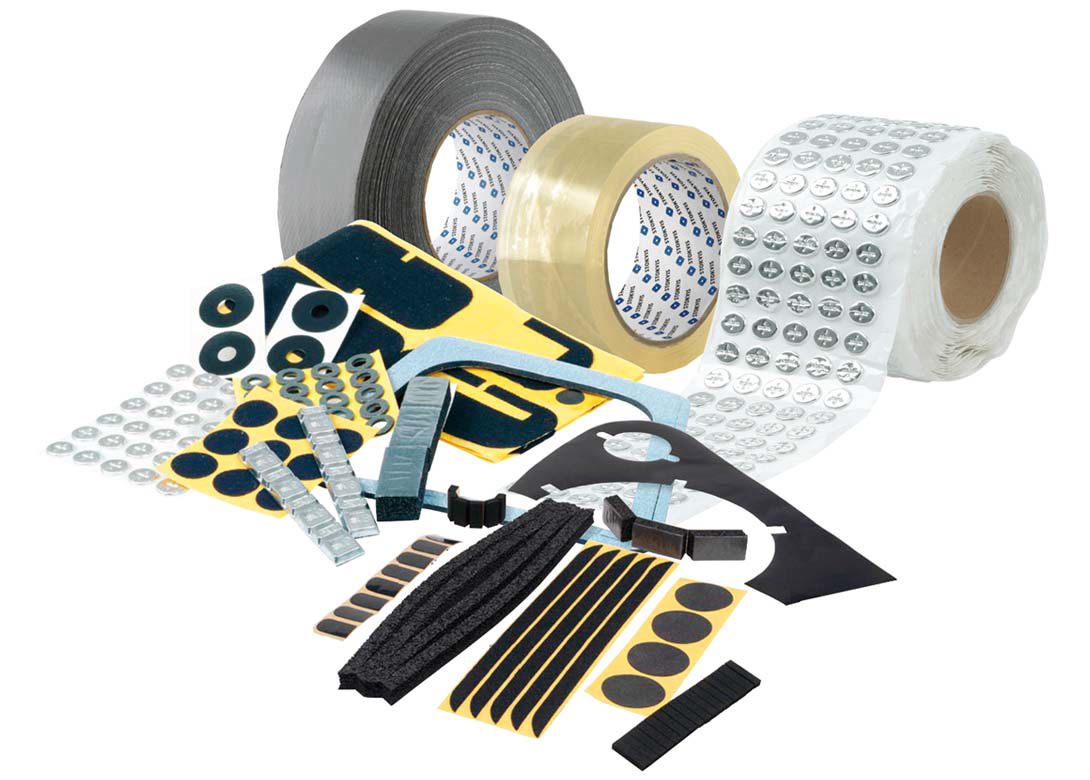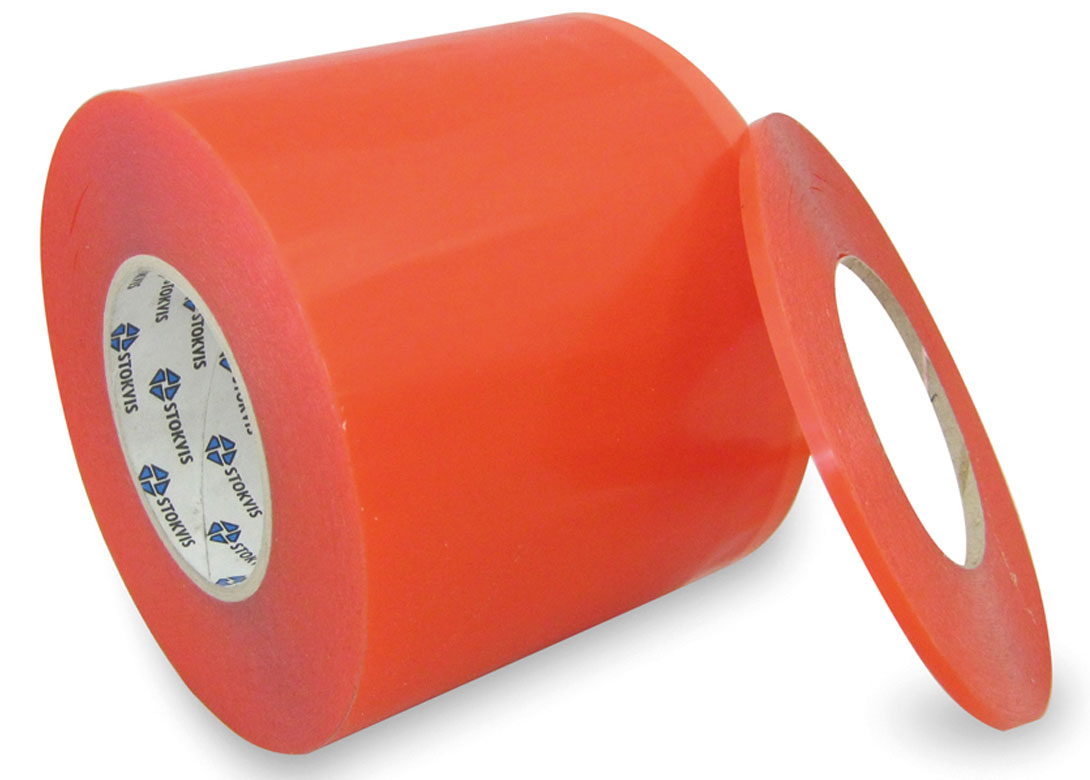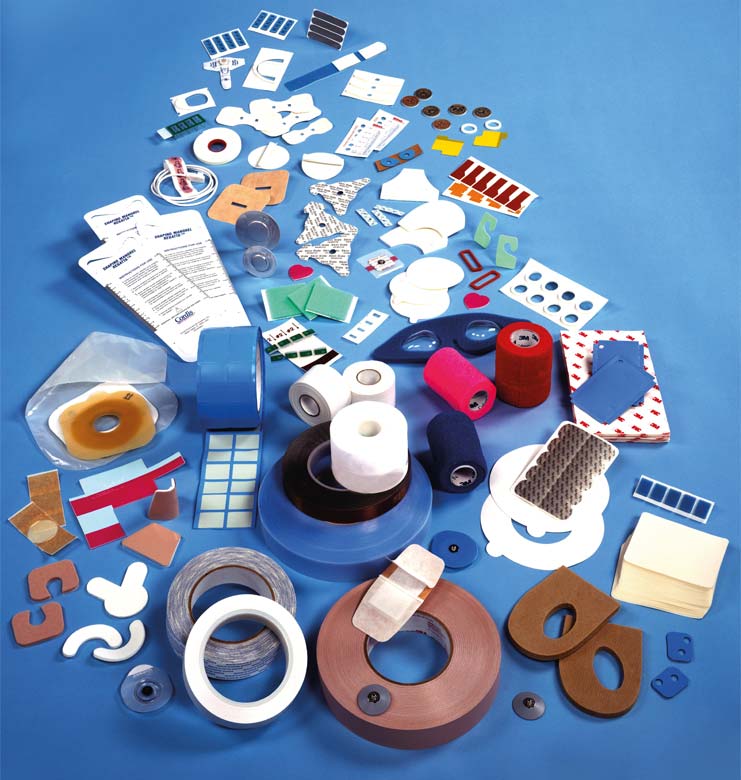
By Steve Morrow, business development manager, Techsil Ltd
Traditionally mechanical fasteners such as nuts and bolts, screws and rivets, and mechanical interlocks, were seen as the strongest and most reliable fastening and fixing method. However, double-sided structural adhesive tapes can match and often exceed this strength.
Double-sided structural adhesive tapes provide longer lasting reliable bonds and offer unique benefits not found with traditional fastening methods such as sealing, damping, shielding, heat dissipation and insulating. As technologies of adhesives and backing materials evolve and new applications are found, more design engineers are utilising the unique characteristics of tapes and the market for adhesive tapes is growing year-on-year.
The global adhesive tapes market was estimated to be US$51.25 billion (€44.9 billion) in 2017 and is projected to reach US$69.42 billion by 2022, at a compound annual growth rate (CAGR) of 6.26% between 2017 and 2022 (Markets and Markets Research Ltd – Adhesives Tapes Market Report April 2018). The tapes market can be split into two distinct categories – commodity adhesive tapes and speciality adhesive tapes. Commodity adhesive tapes include packaging, masking, and consumer and office tapes.
Over the forecast period, the market is anticipated to witness faster growth in the speciality adhesive tapes category, exhibiting a CAGR of 6.8% in terms of value (PS Market Research Adhesives Tapes Market Report July 2018). This is attributed to the large-scale utilisation of these tapes in rapidly growing industries such as automotive and transportation, healthcare, electrical and electronics, white goods, paper and printing, building and construction, and retail.
The major growth driver for the adhesive tapes market is the expanding automotive industry. In this industry, tapes having adhesive properties are mainly used in the form of double-sided and protection tapes. Automotive manufacturers are moving from mechanical fasteners to automotive tapes with adhesive properties to cut down the weight of vehicles. Since mechanical fasteners, such as bolts and screws, increase the weight of the vehicles, these products are increasingly being substituted by lightweight adhesive solutions. Thus, the growing adoption of these tapes in the automotive industry is expected to boost the adhesive tapes market even further.
Replacing mechanical fasteners with structural bonding tapes can result in many benefits such as:
Even distribution of stress
Mechanical fastenings can produce concentrated areas of stress and in the case of many fastenings the substrates have to be physically penetrated. In both cases this can cause damage to the materials being joined such as splitting, crazing and distortion at the site of the fastener.
Structural bonding tapes, on the other hand, eliminate any concentrated areas of stress by distributing forces evenly over the whole bonded area. Additionally, speciality tapes are designed to dampen vibration, which also reduces damage to the part and eliminate noises such as rattles and hums.
Techsil is currently working with a company that manufactures panel sided truck trailers. The company was looking for a double-sided structural adhesive tape to replace rivets on two metal substrates that had uneven surfaces. A transparent acrylic foam tape (DF011) was recommended by Techsil, which gives a high strength structural bond to metal, high initial tack and high heat resistance. The foam thickness allows for an evenly distributed bond over the uneven surfaces of the substrates. Other typical applications include replacing mechanical fasteners and welds in the signs and graphics industry.

Easily join dissimilar substrates
One of the toughest challenges of bonding, is joining together substrates with different coefficients of thermal expansion (CTE) such as:
The different CTEs mean that changes in the surrounding temperature results in different movements of each substrate, which puts stress onto the joint. Furthermore, thermal cycling and service temperature extremes can cause extra problems and sometimes complicate an already difficult situation. For instance, the fastened site will be exposed to wear and will deteriorate in the long-term. Another consideration with metal mechanical fasteners, when joining dissimilar metals, is that the joined surfaces will be subject to bimetallic corrosion. Both of these challenges will result in a shortened lifespan.
Replacing fasteners with adhesive tapes removes these difficulties and improves the life of the product. The adhesive materials used on a structural bonding tape is flexible and durable and compensates for any deflections of the adjoining materials, allowing the bonded entities to move more freely with little constraint and therefore less stress. They also provide a barrier between different surfaces to reduce or prevent bimetallic corrosion.
Eliminate rust and corrosion
As well as the above mentioned bimetallic corrosion, substrates joined with traditional fixings can also be subject to rust and corrosion, for example around screw holes, particularly in outdoor applications or where moisture is present.
Adhesive tapes not only remove the need for screw holes, but offer long-term durability in demanding applications with resistance, to environmental extremes such as high and low temperatures, UV and water.
Techsil is also working with a manufacturer of laundry machines, which wanted to attach the plastic cable trunking to the outside of a new laundry machine. In previous models screws had been used. It was important to ensure that no steam could ingress into the cable trunking and so all screw holes needed to be eliminated.
A high performance double-sided tape (DSPR965) was therefore recommended. This tape has very good tack, adhesion, and shear resistance, to low surface energy materials and good resistance to humidity, solvents, plasticisers and temperature.
Some other applications it is used for include the mounting of ABS plastic parts, trim, mirrors and covers in the automotive industry; bonding varnished surfaces and plastic clips in the point of sale display industry; mounting rubber and EPDM profiles; bonding decorative profiles and mouldings in the furniture industry; attaching cable trunking in the electrical industry; bonding textiles in the window blinds and furniture industry; and splicing and extending in the paper, textile, plastic and metal film industries.
DSPR965 has excellent temperature resistant characteristics, with typical short-term temperature resistance of 200°C. Coupled with its excellent dynamic shear and tensile strength, it can solve the issue of one tape for multi surface applications.
Reduce noise and vibration
The metal to metal contact of traditional fixing methods can create a lot of unwanted noise when exposed to movement and vibration. Even plastics and composites used in car dashboards, doors and seats can produce annoying squeaks, rattles and hums.
Using an adhesive tape as a fixing method eliminates metal to metal contact, can provide additional damping qualities to reduce damage and noise by vibration, as well as provide a seal against dirt and moisture.

Protect against impact and fatigue
The ability of mechanical fasteners to resist fatigue and impacts deteriorates in the long-term, which shortens the lifespan of products and parts. Whereas adhesive tapes retain long-term flexibility, which means they are more resistant to any impacts and fatigue. Their dampening properties also reduce the effects of impacts and vibrations.
Enhanced aesthetic design and lightweighting
Nuts and bolts can limit design options where the fixings might need to be hidden but still easily accessible. Also, some traditional fasteners and fixings can be quite weighty especially ones made of metal. Lightweighting is of particular concern in the automotive market in the quest to make vehicles more efficient and environmentally friendly.
Adhesive tapes have revolutionised design options to improve functionality and aesthetics. Designers are able to use thinner, lighter materials and take advantage of newly developed composite materials – some of which are difficult to drill into. Tapes offer invisible joints and a cleaner appearance than traditional fastenings. Adhesive materials are available where disassembly is required and are lighter than mechanical fastenings, reducing overall product weight. Tapes also take up less space.
Reducing manufacturing and assembly times
Tapes can be die cut by the supplier to customised shapes and sizes including location holes if needed. Replacing traditional fixing methods with easy to apply die cut adhesive tape components can reduce assembly times, as well as material requirements, refinishing and ultimately costs. In most cases there is minimal need for training and little or no investment in equipment. Pressure sensitive adhesives can also offer immediate handling strength.
How do you choose the right tape?
With a myriad of adhesive tapes on the market it can be a difficult task determining the right tape for a particular application. There are many things to consider such as the substrates, bond stress, application conditions and environmental factors. Using a tapes specialist can ensure you select the right materials in the right format based on your particular manufacturing requirements.
About the author
Steve Morrow is a specialist in the adhesive tape market with knowledge of a wide variety of structural bonding tapes and engineering applications. He has a background in engineering and has worked for Techsil since 2010.
Techsil Ltd is a global supplier of industrial RTV silicones, adhesives, sealants, encapsulants, conformal coatings, tapes, and dispensing equipment, to a wide range of manufacturing industries including aerospace, automotive, medical, electronics and LED lighting.

Having spent a decade in the fastener industry experiencing every facet – from steel mills, fastener manufacturers, wholesalers, distributors, as well as machinery builders and plating + coating companies, Claire has developed an in-depth knowledge of all things fasteners.
Alongside visiting numerous companies, exhibitions and conferences around the world, Claire has also interviewed high profile figures – focusing on key topics impacting the sector and making sure readers stay up to date with the latest developments within the industry.
Don't have an account? Sign Up
Signing up to Fastener + Fixing Magazine enables you to manage your account details.